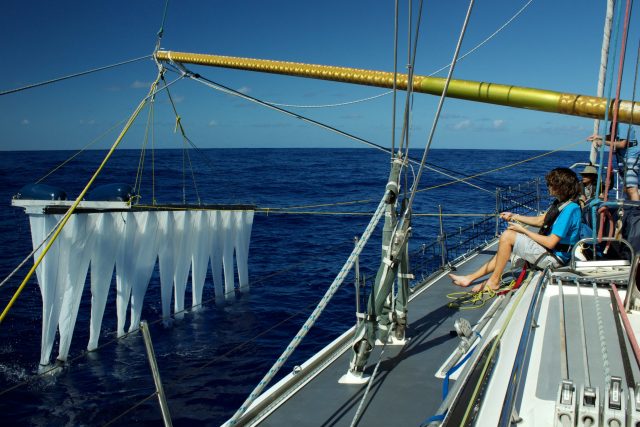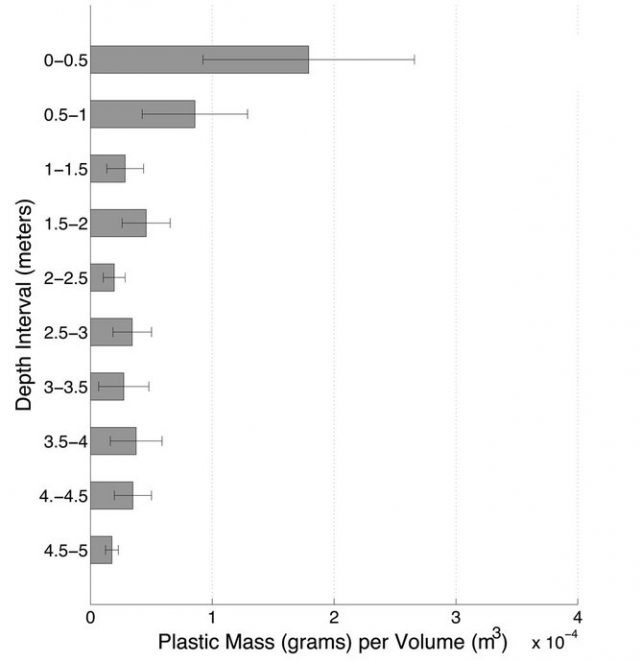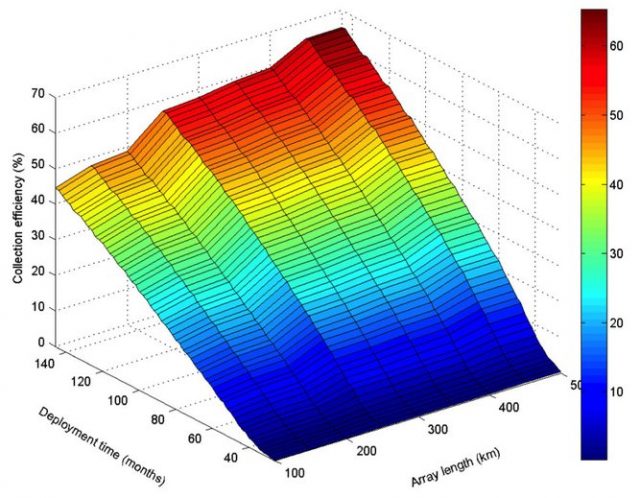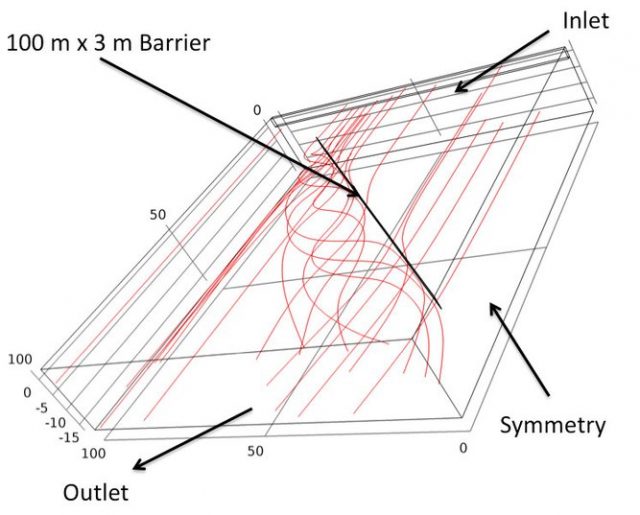
Responding to critics
Back to updatesI never intended to write this piece. The articles I am about to comment on are now over a year old, and when people asked me for a response on these articles, I always asked them to ‘be patient and let the feasibility study decide’.
But now the published feasibility study indicates The Ocean Cleanup is a feasible and viable method to clean the oceans of plastic, these articles are still being used as if its arguments disprove the scientific research we conducted in the past year, while it’s actually the other way around. May this piece serve as an instruction manual for future innovators, who will most certainly come across similar situations while working to fulfill their mission.
Three years ago – aged 16 – I suddenly realized I came across more plastic bags than fish. A high school science project gave me the opportunity to investigate the problem for half a year, and when starting studying Aerospace Engineering, I couldn’t stop thinking about it. This thinking ultimately led to the passive ocean cleanup concept, which I presented at a TEDx conference in 2012.
The idea was simple. I wondered; why move through the oceans, if the oceans can move through you? Instead of going after the plastics, you could simply wait for the plastic to come to you. Without requiring any added energy. An array of floating barriers would first catch and concentrate the debris, enabling a platform to efficiently extract the debris afterward. The ocean current would pass underneath the barriers, taking all neutrally buoyant sea life with it, preventing by-catch.
I then decided to pause both university and social life, enabling me to focus all my time on developing the idea. But with only 200 euros of budget, and only several people that offered their help. That all changed on the 26th of March 2013, when the first articles appeared on the concept.
Besides the tremendous amount of support I received, some critical articles inevitably started appearing. An article by Dr. Martini compared it to a cocktail, while 5Gyres’ Mr. Stiv Wilson called it a ‘fool’s errand’. Fortunately, the critics did confirm the 50 questions we set out to answer were the right ones. So I put all 400 media requests on hold, and started performing an extensive feasibility study.
This week, I presented the results of a year-long study me and my 100 colleagues have been working on. The 530-page report has been authored by 70 people and concluded my concept is indeed likely a feasible and viable ocean cleanup technique. The conclusion has been peer-reviewed by external experts. And because the now outdated plea by Mr. Stiv Wilson contains most arguments, I will hereby compare and contrast these arguments with what the research showed us.
1.“It’s a great story, but it’s just a story. (…) Gyre cleanup is a false prophet hailing from La-La land that won’t work (…) Slat’s project as it stands is in the fairy tale phase…”
Boyan: We have just published a 530-page report, concluding that The Ocean Cleanup Array is a feasible and viable method for large-scale gyre cleanup, marking the successful end of the preliminary engineering phase. Because of its length and diverse nature, a journal won’t publish it. Hence we have asked external experts to do an informal peer review, which the report passed. Furthermore, part of the report (the plastic processing, the vertical distribution, and computational fluid dynamics) will be separately published in a journal. We are currently increasing the size of the vertical distribution dataset through new expeditions, in collaboration with the Royal Netherlands Institute for Sea Research.

2.“Slat’s idea and drawings are not new”
Boyan: Not new? To prove this statement is incorrect, we decided to file a patent on the novel mooring system last week. The patent check revealed no related solutions. (feasibility study, chapter 3.6)
3. “The problem is that the barriers to gyre cleanup are so massive that the vast majority of the scientific and advocacy community believe it’s a fool’s errand”
Boyan: We have now engineered a new floating barrier, that can span the 100 km that is needed to collect almost half the plastic within 10 years. To be sure it stays in one piece, we used a safety factor of 2.5x to 3x, which is much higher than the offshore standard of 1.82x, to be able to accommodate the weakening of the materials due to fatigue. (feasibility study, chapter 3.6). The new design furthermore enables the buoyancy element to move with the waves, which prevents plastic from splashing over or underneath the boom. This has been confirmed with scale model tests. These scale models also showed that this new design can potentially reduce the loads on the tension-carrying element of the barrier by 60%, making our dimensioning even more conservative.
4. “What I find astonishing is that out of all the gyre cleanup proponents I’ve met, none of them have ever been to the gyres.”
Boyan: So far we have done three expeditions to a gyre in 6 months’ time, on one of which I was fortunate to join myself. (feasibility study, chapter 2.3)

5.“Plastic isn’t just contained within the borders of the gyres, it’s everywhere in the ocean.”
Boyan: This is correct. However, The concentration within the gyres is orders of magnitude higher than that of outside the gyres. Law et al. 2014, for example, revealed the median plastic concentration within the accumulation zone was 3.309 × 104 pieces km−2, while outside the zone the median value was 0 pieces km−2. Hence, it makes sense to focus on the gyres. But of course, it does not mean we will get out all the plastic from the oceans. But we have shown that we can get out a significant proportion of this ocean plastic. (feasibility study, chapter 2.4)
6. “Every time a gyre cleanup proponent has shown me a design for addressing the problem, the first thing I ask is, ‘do you have the money to make 20 million of those doo-hickies?’”
Boyan: Using computational models predicting the concentrations and pathways of plastic pollution in the oceans, we have calculated that with only a single system, almost half the plastic from the Great Pacific Garbage Patch can be removed (feasibility study, chapter 2.6).
7. “Plastic can only be recycled if it’s clean ocean (…) plastics are about the worst possible feedstock for recycling imaginable”
Boyan: Partly true. Of course, plastics degrade (oxidize) when exposed to the marine environment for years to decades. But when we (in collaboration with Universidade de Caxias do Sul) quantified the oxidation rate of ocean plastic using infrared (FTIR) spectroscopy, the quality turned out to be much higher than expected (feasibility study, chapter 9.1). Because many people wonder what to do with the plastic once extracted, we included the post-processing into the scope of the report. First, we proved ocean plastic can be turned into oil, and is just as suitable as normal waste plastic. There is a large market for oil, but the net value is modest. Hence we then also tried mechanical recycling (both heat pressing and injection molding), which showed the plastic can actually be turned into new materials. The only pre-processing was washing; the plastic didn’t even have to be sorted into different polymer types. (feasibility study, chapter 9.2) And even if most damage occurs near the coasts, with an estimated 1.27 B USD of annual damages in the APEC region, removing almost half the plastic within the North Pacific Gyre for just 31.7 M euro per year seems like a pretty good deal, even leaving the value of the plastics aside.
8. “Anywhere where you have a platform, you’re going to have dead squid and flying fish stranding themselves, which will attract sea birds, and thus, guano. All of this stuff, coupled with salt, makes moving parts seize.”
Boyan: All moving parts are inside the platform, and hence not directly exposed to the elements. The lifetime and maintenance requirements have been determined in collaboration with Huisman Equipment, market leader in offshore equipment, i.e. this turned out not to be a problem. (feasibility study, chapters 4.2, 4.4)
9. “My home state of Oregon has been trying to create North America’s first offshore wave energy farm. The first test buoy that was launched, just about 2.5 miles offshore, sank after just a few months. That buoy had a ‘100-year survivability’ rating, and wasn’t just an idea on an Ipad.”
Boyan: According to the spokesperson of the wave energy test, the object in question was actually designed to survive only a couple of months. He mentions to Renewable Energy World: “So when people say – Oh there’s this device and it sank. How do you expect it to last 20 years or even five years in a real commercial development? It wasn’t designed for that,”. In The Ocean Cleanup concept, there is also a need for a platform. As some may have noticed, the design of this processing platform has changed from the concept design. We chose for a spar design, which is proven technology, having been used through decades of ocean engineering. Its specific design has been made in collaboration with a Belgian engineering company. (feasibility study, chapter 4.3) The working principles of the system did not change since I presented the concept 1.5 years ago, must be noted.
10. “First up, life would colonize the booms, weight it down, and create their own current and eddies around it which would affect the ‘flow’ of how the thing is supposed to work.”
Boyan: Biofouling was one of the subjects we investigated, and turned out to be a manageable influence thanks to coatings. Again, this is something we have budgeted for. To be on the conservative side we even budgeted for a complete replacement of the floating elements at the end of the coatings’ lifetime, instead of just recoating the barriers. (feasibility study, chapter 5.3)
11.“Slat mentions that these would be anchored to the seabed. That’s great, but it’s not currently possible to anchor anything in 4,000 meters of water (the average depth of the open ocean). The deepest known mooring is 2,000 meters.”
Boyan: In fact, many small moorings have been placed in over 5000 m of depth by oceanographic institutions like NIOZ and NOAA. The deepest moored oil rig is the Shell Perdido Spar at 2500 m of depth. The Ocean Cleanup will be placed at 3900 m. So we collaborated with the market leader in offshore anchoring systems, who came to the conclusion that “The tools and methods that are available to offshore engineering world can readily be applied for the realization of this project. It is Vryhof Anchors’ professional opinion that with the current knowledge and technology, the mooring of the objects at the given water depths is feasible. The mooring configuration and deployment procedures are similar to proven solutions at 2500 m water depth.” (Senol Ozmutlu, Ph.D.). (feasibility study, chapter 3.7)
12.“Even if you could anchor it, one big storm and his device is going to be ripped from its mooring.”
Boyan: using both simulations (Orcaflex at Vuyk Engineering) and (1:60) scale model tests, we determined the loads on the structure during big storms. Because the soil composition has not been measured at the location (30N, 138W) we determined an Upper Boundary and a Lower Boundary for the softness of the soil, and then conservatively selected a 14m2 soil-piercing Vertical Load Anchor (VLA) to keep it in place, i.e. it won’t go anywhere. Please note that this is all proven technology. (feasibility study, chapter 3.7)
13.“how do they stay in a ‘V’ shape that Slat assumes is needed to gather the plastic?”
Boyan: The booms are moored to the seabed at intervals of 4000 m. We calculated that at an angle of 30 degrees relative to the axis perpendicular to the current enables the plastic to travel at half the speed at which it arrives into the V. (feasibility study, chapters 3.4, 3.7)
14. “The definition of plankton is an organism that can’t swim against a current; plankton have no control where they go and the assumption that they’ll somehow avoid the current that is taking the plastic into the processing thinga-ma-jiggy is a bad one.”
Boyan: Plankton indeed comes from the Greek word Planktos, meaning ‘wanderer’ or ‘drifter’. This is exactly why they won’t get caught. The ocean current passes underneath the floating barriers, taking all neutrally buoyant sea life (including both phytoplankton and zooplankton) with it, while positively buoyant plastics remain in front of it. Down to a certain particle size of course, where the force downward (the current) equals out the force upwards (the buoyancy force of the plastic). In collaboration with the Freiburg Institute of Advanced Studies, we simulated this hypothesis using Computational Fluid Dynamics simulations (CFD software and code used were LEMMA ANANAS, Comsol Multiphysics, and ANSYS CFX, if you’re interested), which confirmed our expectations; plastic gets caught, neutrally buoyant organisms do not. (feasibility study, chapters 3.3 and 3.4). So there is no centrifuging needed; plankton does not accumulate, while plastic does. But in the hypothetical case that all plankton that passes underneath these barriers would be damaged, the time it would take to restore that biomass is less than 7 seconds in a year. And that’s the worst-case scenario. (feasibility study, chapter 6)
15. “And if one endangered sea turtle was caught up? The fines that Slat would face would bankrupt his project in a second.”
Boyan: Such a law does not exist in international waters. The system would not be considered a fishing apparatus, and hence there are no by-catch regulations. (feasibility study, chapter 8.4). That being said, the chance a sea turtle would ever get caught is virtually zero. The system does not use nets but closed floating barriers, and hence entanglement is impossible. (feasibility study, chapters 3.2, 3.6, 6). The Ocean Cleanup actually helps reducing sea turtle deaths; the scale of plastic ingestion by sea turtles is staggering (feasibility study, chapter 1.3)
16. “Perhaps one of the worst assumptions evident in this design is that the plastic will be on the sea surface. Researchers have shown that plastic suspends in the water column at 100-150 meters due to wave action and sea state.”
Boyan: This is misleading. It is true that the mixed layer can stretch to these depths during winter months, and it’s true that very small amounts of plastic can be found throughout the water column, but as our past 3 expeditions to the gyres have shown, the vast majority of plastics can be found in the top 1-3 m (depending on wind and sea state). This explains why researchers (as well as 5Gyres themselves) sample the surface layer of the oceans to measure plastic pollution. When we conservatively look at the data taken in winter months only, the surface layer contained 10x more microplastics than the layer at 4.5 m of depth. Hence our barriers stretch down to 3 meters, to capture the most of plastic. And in fact, here I am only addressing the small particles. The large plastics (that makeup over 80% of the plastic in the gyres) are all at the sea surface. (feasibility study, chapter 2.2, 2.3)

17. “it shows that his estimates of how much plastic is out there aren’t correct and thus, his five-year timeframe to clean a gyre becomes even more unrealistic.”
Boyan: The wind effect has been taken into account in the feasibility calculations, so this does not influence the figure that within 120 months almost half the contents of the Great Pacific Garbage Patch can be removed with a single system. This is very close to the estimate I personally made before the feasibility study, estimating a third can be removed in 5 years. (feasibility study, chapter 2.6)

18. “to clean the ocean of floating plastic, you don’t need to go out and get it, it will come to you.”
Boyan: Thank you for pointing out how the system works.
19. “Gyre Memory demonstrates that upon each orbit of a gyre, the gyre will spit out about half its contents.”
Boyan: There is no data to support this statement. Actually, using the best models currently available (the Van Sebille and LebretonModels) we attempted to quantify the natural loss of plastics from the gyres, producing a figure of <0.1%/yr. Based on communication between our modelers and the makers of the models, we eventually decided to exclude this figure from the report, because the models are unreliable near the coast. But it’s safe to say a gyre does not spit out half of its contents per rotation. Unfortunately, it appears that the plastic that’s already trapped in the currents of the gyres does not simply go away by itself.
20.“The public, for their part, loves the thought of a quick fix and wants to believe that a ‘boy genius’ can come along and solve a problem that all the old crusty PHDs can’t.”
Boyan: I think this is the part for which I have to credit my team. Although I am familiar with the contents of the report and did contribute small parts to the report, I have mainly been involved with creating the circumstances in which my team could do the research. I believe we had about 10-15 PhDs co-authoring the report, and all other authors are indeed older and more educated then I am myself.
So what conclusions can we draw from this? Yes, the Ocean Cleanup concept is likely feasible and viable. But perhaps more interestingly: the question should not be: “prevention or cleanup?”. The question should be: “Now that there is a way to get out what’s already in the oceans, how are we now going to make sure no more plastic enters the oceans in the first place?”.
If we were to start a cleanup today, we’d likely have to start all over again once we’re done, so it’s a no-brainer that the flow of the ‘faucet’ should first be significantly reduced, but until now, the ‘cleaning mop’ hadn’t been invented yet. Now that there is this method, it’s our duty to stress the importance to close the tap as well.
As far as the relation between The Ocean Cleanup and 5Gyres goes: we have always been in good contact with their president (Marcus Eriksen), and have continued to share data and trawl designs over the past year. We most certainly have common interests in prevention and field research.
To be fair, both activists and academics have seen many cleanup concepts come and go in the past decade and a half. With this in mind, a response like this one is very understandable. But while these (vessel based) concepts all ended at the fancy artist’s impressions, for us this was just the beginning.
When you are trying to do something that has never been done before, it’s only natural to have critics. We are actually very much open to serious critical review of the report. And until we have actually finished the operation, we will surely have no shortage of critics.
But until that time, we can ensure we will continue, and keep a stiff upper lip.
Boyan Slat
Founder & President
The Ocean Cleanup
Also see our Feasibility Study report and Executive Summary.



